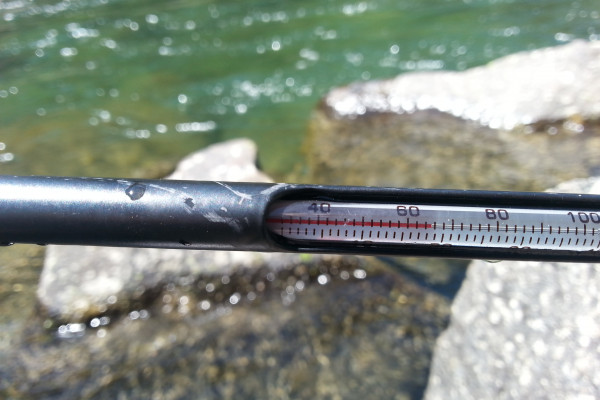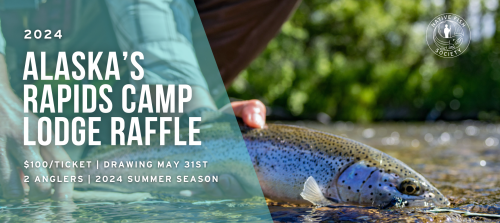Heat is a threat multiplier, increasing the detrimental effects of each of the factors impacting salmon conservation known as the “Four H's:” hatcheries, harvest, hydropower, and habitat. As human-caused climate change accelerates, the impacts of the other H's are expected to intensify. Here are some of the ways climate change will also change the needs of fish species and the conservation challenges they face.
General Climate Effects
Warming temperatures and decreased snowpack: the new normal for the Pacific Northwest.
The impacts of climate change are becoming increasingly apparent across the region’s landscapes. Hotter summers, warmer winters, and decreased snowpack have hit waterways and native fish especially hard. Native fish face the double whammy of decreasing stream flows and a hotter climate. The warm winter of 2015 and the resulting drought conditions the following summer are a harbinger of the region’s not-too-distant future. For native fish, and the communities that care for and depend upon them, this grim reality necessitates that fish and wildlife managers take proactive steps to adopt and implement policies that will ensure the resiliency of our native fish in the face of climate change. Average temperatures in Oregon are forecast to climb an additional 3-7 degrees Fahrenheit by 2050 if current global trends continue; even under the most optimistic scenarios, Oregon’s temperatures will climb an additional 2-5 degrees Fahrenheit by mid-century.
Warmer water temperatures are problematic for native fish.
Of all the factors that affect salmonid biology, temperature is probably the most important environmental influence (Brannon, 1993; USEPA, 2001).
Different salmonids have evolved to adapt to different temperature regimes based on local environmental conditions, and run-timing for anadromous salmonids is critically linked to water temperature in order to optimize survival strategies for migration, spawning, incubation, emergence, and rearing (USEPA, 2001).
Studies on the effects of temperature on salmonids are numerous and have identified that water temperature can affect critical biological processes including: “metabolism (Fry, 1971), cellular function (Prosser, 1991), protein structure (Somero and Hofmann, 1997), enzyme activity (Lehninger, 1982), and diffusion rates,” and water temperature has been found to impact nearly every phase of salmonid life histories including upstream and downstream migration, spawning, rearing, feeding ability, smoltification, swimming speed, result in direct and delayed mortality, cause increased disease, and alter the competitive dominance of other predators (USEPA, 2001; Carter, 2005; Kubicek, 1977; Elliot 1981). Moreover, the duration and severity of the time in which salmonids are exposed to thermal pressures can affect their long-term survival (Carter, 2005; Ligon et al., 1999), and as water temperatures rise, dissolved oxygen levels decrease, resulting in further physiological stress on fish.
Intersections of Heat with the “4 Hs”
Hatcheries
The two main effects of hatcheries on wild fish--competition and genetic introgression--are exacerbated by climate change.
Hatchery fish compete with wild fish for food and living space. As climate change intensifies, cold water refuges, which are critical for smolt survival during outmigration in warm years, are expected to shrink or disappear. Hatchery smolts will compete with wild fish for access to those cold water holding areas. Additionally, it is becoming increasingly apparent that the North Pacific is less productive in warmer years and that salmon and steelhead may be limited by a reduced ocean carrying capacity, resulting in higher competition between hatchery and wild fish in the marine as well as freshwater environments.
Hatchery salmon and steelhead typically have lower levels of genetic diversity than their wild counterparts. An increase in the percent hatchery origin spawners on natural spawning grounds (pHOS) can drive down the genetic diversity of the entire population. This is particularly detrimental as populations with higher levels of genetic diversity are more likely to survive extreme instream conditions that will become more frequent with climate change.
Harvest
Increased mortality from catch and release fisheries can be expected under climate change. Because salmon and steelhead are poikilothermic, their metabolism increases with increased water temperatures. Salmon and steelhead that are angled at high water temperatures (research suggests 18C/64F) have increased mortality rates, likely due to excessive energy expenditure, inadequate ability to recover, air exposure, and increased rates of infection of hooking wounds. Even fish that initially swim off without incident after being released can later die as a result of the physiological strain of fighting and being exposed to air in high water temperatures.
Hydropower
Dams often alter the temperature conditions in rivers in addition to changing the flow regime. Extensive reservoirs behind large dams often become vertically stratified, allowing water at the reservoir surface to become hotter than would naturally occur in a free-flowing river. With climate change, reservoirs are becoming even hotter, creating conditions that are difficult for the survival of salmonids.
River temperatures downstream of dams are also altered. Dams releasing water only from the top of reservoirs will artificially warm downstream river temperatures, while those that release purely bottom water will create artificially cold temperatures. With climate change, dams releasing water from the top of reservoirs will likely create areas downstream that exceed the temperature thresholds of salmonids. Bottom-release dams may create areas of thermal refuge for salmonids, though fish migrating upstream of those dams may be receiving an unreliable temperature cue to begin migration while upstream temperatures are still too warm.
Habitat
Climate change will exacerbate instream and riparian habitat destruction. Clearcut logging and grazing already lead to increased stream temperatures. More frequent intense winter storms under climate change will lead to increased sediment deposition after those disturbances. Increased development of urban areas creates heat islands that are warmer than surrounding natural areas. Salmon and steelhead that have to migrate through urban rivers will face increased temperatures there.
Salmon and steelhead gain most of their body mass in the marine environment, but climate change has led to degraded ocean conditions. Increases in sea surface temperatures have decreased ocean productivity and reduced prey availability. Acidification increases stress to salmon and steelhead and also decreases prey populations.

